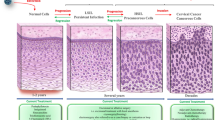Abstract
Inactivation of tumor suppressor p53 accompanies the majority of human malignancies. Restoration of p53 function causes death of tumor cells and is potentially suitable for gene therapy of cancer. In cervical carcinoma, human papilloma virus (HPV) E6 facilitates proteasomal degradation of p53. Hence, a possible approach to p53 reactivation is the use of small molecules suppressing the function of viral proteins. HeLa cervical carcinoma cells (HPV-18) with a reporter construct containing the β-galactosidase gene under the control of a p53-responsive promoter were used as a test system to screen a library of small molecules for restoration of the transcriptional activity of p53. The effect of the two most active compounds was studied with cell lines differing in the state of p53-dependent signaling pathways. The compounds each specifically activated p53 in cells expressing HPV-18 and, to a lesser extent, HPV-16 and exerted no effect on control p53-negative cells or cells with the intact p53-dependent pathways. Activation of p53 in cervical carcinoma cells was accompanied by induction of p53-dependent CDKN1 (p21), inhibition of cell proliferation, and induction of apoptosis. In addition, the two compounds dramatically decreased transcription of the HPV genome, which was assumed to cause p53 reactivation. The compounds were low-toxic for normal cells and can be considered as prototypes of new anticancer drugs.
Similar content being viewed by others
References
Kopnin B.P. 2000. Targets for oncogenes and tumor suppressors: A key to understanding basic mechanisms of carcinogenesis. Biokhimiya. 65, 5–33.
Chumakov P.M. The function of p53 gene: A life-or-death choice. Biokhimiya. 65, 34–47.
Baker S.J., Fearon E.R., Nigro J.M., Hamilton S.R., Preisinger A.C., Jessup J.M., vanTuinen P., Ledbetter D.H., Barker D.F., Nakamura Y., White R., Vogelstein B. 1989. Chromosome 17 deletions and p53 gene mutations in colorectal carcinomas. Science. 244, 217–221.
Hollstein M., Hergenhahn M., Yang Q., Bartsch H., Wang Z.Q., Hainaut P. 1999. New approaches to understanding p53 gene tumor mutation spectra. Mutat Res. 431, 199–209.
Levine A.J., Perry M.E., Chang A., Silver A., Dittmer D., Wu M., Welsh D. 1994. The 1993 Walter Hubert Lecture: The role of the p53 tumour-suppressor gene in tumorigenesis. Br. J. Cancer. 69, 409–416.
Mantovani F., Banks L. 2001. The human papillomavirus E6 protein and its contribution to malignant progression. Oncogene. 20, 7874–7887.
Lane D.P., Lain S. 2002. Therapeutic exploitation of the p53 pathway. Trends Mol. Med. 8, S38–S42.
McCormick F. 2003. Cancer-specific viruses and the development of ONYX-015. Cancer Biol. Ther. 2, S157–S160.
Vecil G.G., Lang F.F. 2003. Clinical trials of adenoviruses in brain tumors: A review of Ad-p53 and oncolytic adenoviruses. J. Neurooncol. 65, 237–246.
Foster B.A., Coffey H.A., Morin M.J., Rastinejad F. 1999. Pharmacological rescue of mutant p53 conformation and function. Science. 286, 2507–2510.
Bykov V.J., Issaeva N., Shilov A., Hultcrantz M., Pugacheva E., Chumakov P., Bergman J., Wiman K.G., Selivanova G. 2002. Restoration of the tumor suppressor function to mutant p53 by a low-molecular-weight compound. Nat. Med. 8, 282–288.
zur Hausen H. 1996. Papillomavirus infections: A major cause of human cancers. Biochim. Biophys. Acta. 1288, F55–F78.
Scheffner M., Werness B.A., Huibregtse J.M., Levine A.J., Howley P.M. 1990. The E6 oncoprotein encoded by human papillomavirus types 16 and 18 promotes the degradation of p53. Cell. 63, 1129–1136.
Ashcroft M., Vousden K.H. 1999. Regulation of p53 stability. Oncogene. 18, 7637–7643.
Schneider-Gadicke A., Schwarz E. 1986. Different human cervical carcinoma cell lines show similar transcription patterns of human papillomavirus type 18 early genes. EMBO J. 5, 2285–2292.
Razorenova O.V., Agapova L.S., Budanov A.V., Ivanov A.V., Strunina S.M., Chumakov P.M. 2005. Retroviral reporter systems for assessing the activity of stress-inducible signal transduction pathways controlled by the p53, HIF-1, and HSF-1 transcription factors. Mol. Biol. 39, 286–293.
Strunina S.M., Ivanov A,V., Chumakov P.M. 2003. Construction of a reporter system for fine assessment of the p53 activity in cultured cells, Mol. Biol. 37, 1007–1018.
Grignani F., Kinsella T., Mencarelli A., Valtieri M., Riganelli D., Lanfrancone L., Peschle C., Nolan G.P., Pelicci P.G. 1998. High-efficiency gene transfer and selection of human hematopoietic progenitor cells with a hybrid EBV/retroviral vector expressing the green fluorescence protein. Cancer Res. 58, 14–19.
Pietenpol J.A., Tokino T., Thiagalingam S., el-Deiry W.S., Kinzler K.W., Vogelstein B. 1994. Sequence-specific transcriptional activation is essential for growth suppression by p53. Proc. Natl. Acad. Sci. USA. 91, 1998–2002.
Komarova E.A., Chernov M.V., Franks R., Wang K., Armin G., Zelnick C.R., Chin D.M., Bacus S.S., Stark G.R., Gudkov A.V. 1997. Transgenic mice with p53-responsive lacZ: p53 activity varies dramatically during normal development and determines radiation and drug sensitivity in vivo. EMBO J. 16, 1391–1400.
Hietanen S., Lain S., Krausz E., Blattner C., Lane D.P. 2000. Activation of p53 in cervical carcinoma cells by small molecules. Proc. Natl. Acad. Sci. USA. 97, 8501–8506.
el-Deiry W.S., Kern S.E., Pietenpol J.A., Kinzler K.W., Vogelstein B. 1992. Definition of a consensus binding site for p53. Nat. Genet. 1, 45–49.
Kern S.E., Kinzler K.W., Bruskin A., Jarosz D., Friedman P., Prives C., Vogelstein B. 1991. Identification of p53 as a sequence-specific DNA-binding protein. Science. 252, 1708–1711.
Funk W.D., Pak D.T., Karas R.H., Wright W.E., Shay J.W. 1992. A transcriptionally active DNA-binding site for human p53 protein complexes. Mol. Cell. Biol. 12, 2866–2871.
el-Deiry W.S., Tokino T., Velculescu V.E., Levy D.B., Parsons R., Trent J.M., Lin D., Mercer W.E., Kinzler K.W., Vogelstein B. 1993. WAF1, a potential mediator of p53 tumor suppression. Cell. 75, 817–825.
Razorenova O.V., Ivanov A.V., Budanov A.V., Chumakov P.M. 2005. Virus-based reporter systems for monitoring transcriptional activity of hypoxia-inducible factor 1. Gene. 350, 89–98.
Author information
Authors and Affiliations
Additional information
Original Russian Text © D.V. Kochetkov, G.V. Ilyinskaya, P.G. Komarov, E. Strom, L.S. Agapova, A.V. Ivanov, A.V. Budanov, E.I. Frolova, P.M. Chumakov, 2007, published in Molekulyarnaya Biologiya, 2007, Vol. 41, No. 3, pp. 515–523.
Rights and permissions
About this article
Cite this article
Kochetkov, D.V., Ilyinskaya, G.V., Komarov, P.G. et al. Transcriptional inhibition of the human papilloma virus reactivates tumor suppressor p53 in cervical carcinoma cells. Mol Biol 41, 459–466 (2007). https://doi.org/10.1134/S0026893307030120
Received:
Accepted:
Issue Date:
DOI: https://doi.org/10.1134/S0026893307030120




